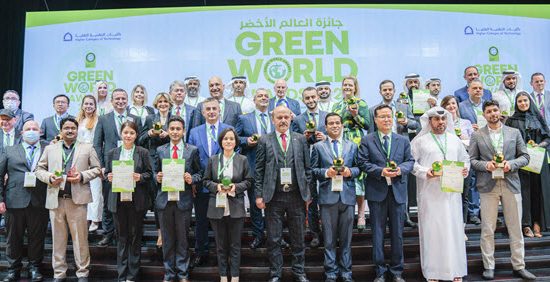UAE. Private wealth in the United Arab Emirates (UAE) showed solid growth in 2014 (8.4 percent), according to a new report by The Boston Consulting Group (BCG), Global Wealth 2015: Winning the Growth Game, being released today.
In the UAE, the growth of private wealth was driven mainly by equities. After all, between 2013 and 2014, the amount of wealth held in equities rose by 13.8 percent across the nation, compared with 1.6 percent for bonds, and 6.9 percent for cash and deposits.
Based on BCG’s comprehensive study, the UAE is poised for further growth in the next five years, with the wealth breakdown anticipated to be 43 percent in cash and deposits, 9 percent in bonds, and 47 percent in equities.
The Global Wealth 2015 report, BCG’s fifteenth annual study of the global wealth-management industry, addresses the current and future size of the market – notably the projection that the Asia-Pacific region (excluding Japan) will surpass North America as the wealthiest region in the world in 2016 – and explores the keys to profitability on the basis of extensive benchmarking of global players.
The report also examines the choices that institutions face regarding where to invest in their own businesses in order to achieve profitable growth and overall future excellence.
Overall, the analysis found that wealth managers must raise their games on numerous fronts and decide where to invest in their own businesses if they hope to ensure profitability through 2020.
“Potentially disruptive forces are everywhere,” said Markus Massi, a Partner & Managing Director at BCG Middle East. “A more complex investing environment, highly demanding clients, technological evolution, tightening regulatory climate, and other trends are straining traditional models. As the pace and magnitude of change intensifies, wealth managers need to think more strategically.”
THE UAE IN FOCUS
Over the next five years, across the UAE, private wealth held in equities is expected to increase at a CAGR of 18.5 percent. In parallel, bonds as well as cash and deposits will grow by 3.8 percent and 6.2 percent, respectively.
“In terms of wealth distribution, private wealth held by ultra-high-net-worth (UHNW) households (those with above $100 million) in the UAE grew by 9 percent in 2014, on the back of dynamic equity markets and a growing economy,” added Massi.
“Private wealth held by the UHNW segment is set to soar by an impressive 21.1 percent by 2019. Interestingly, in the UAE, the upper high-net-worth (HNW) segment (those with between $20 million and $100 million) witnessed the highest growth in 2014.”
Private wealth in that segment rose by a healthy 16.1 percent in 2014. With a projected CAGR of 12 percent over the next five years, this segment is expected to see continued growth. This will be triggered by both a large number of new households entering the segment and growth in average wealth per household.
In the UAE, private wealth held by the lower HNW segment (those with between $1 million and $20 million) grew at a slightly lower rate (9.1 percent) in 2014. It is forecasted to grow by 12.9 percent over the next five years.
“The total number of millionaire households (those with more than $1 million in private wealth) in the UAE increased by 5.5 percent in 2014,” remarked Massi. “Looking ahead, it is set to grow another 5.3 percent by 2019.”
SPOTLIGHT ON THE MEA REGION
Private wealth in the MEA region increased by more than 9 percent to reach nearly $6 trillion in 2014. With a projected CAGR of 9 percent, the region’s private wealth will rise to an estimated $9 trillion in 2019 with the UAE ($1 trillion) and Saudi Arabia ($2 trillion) as the largest markets.
While 2014 continued to see strong double-digit equity performance in the MEA, the year was also positive for onshore bonds with double-digit performance in the region.
In addition, the MEA region had the second-highest proportion of newly created wealth (44 percent), with the balance of the increase in wealth attributable to the market performance of existing assets.
“Solid savings rates and continued GDP rises in oil-rich countries contributed to the newly created wealth, while existing asset performance was solid despite the region’s volatile developments,” said Massi. “Overall, across the region, the drivers of wealth growth will have significant implications for wealth managers in the years ahead.”
For example, to capture newly created wealth that is driven mainly by GDP growth and savings rates, wealth managers must strengthen their asset-gathering and client acquisition capabilities through differentiated offerings, tailoring them to specific regions and client segments.
To maximize the performance of existing assets, the focus will be on more creative investment strategies and product offerings, also customized by region and client segment. Moreover, following the high currency fluctuations witnessed in 2014, currency exposure will be a key consideration for future investment strategies.
In the MEA region, in 2014, the share of private wealth held in equities stood at 27 percent – amongst the highest in the world. Similarly, the share of private wealth held in bonds was also quite high (21 percent).
GLOBAL RESULTS
• Market Sizing. According to the report, global private financial wealth grew by nearly 12 percent in 2014 to reach a total of $164 trillion. Almost three-quarters (73 percent, or $13 trillion) of private wealth growth was generated by the market performance of existing assets, with the balance (27 percent, or $5 trillion) generated by newly created wealth.
North America, with $51 trillion in private wealth, remained the world’s wealthiest region in 2014. But for the first time, Asia-Pacific (excluding Japan) overtook Europe (Eastern and Western Europe combined) to become the world’s second-wealthiest region with $47 trillion.
With a projected $57 trillion in 2016, Asia-Pacific (excluding Japan) is expected to surpass North America (a projected $56 trillion) as the world’s wealthiest region, and is further projected to hold one-third of global wealth in 2019. Over the next five years, total private wealth globally is projected to post a compound annual growth rate of 6 percent to reach an estimated $222 trillion in 2019.
• Wealth Distribution. The report says that the total number of millionaire households globally (those with more than $1 million in private wealth) reached 17 million in 2014, up strongly from 15 million in 2013. The increase was driven primarily by the solid market performance of existing assets, both in developed and emerging markets.
Millionaire households held 41 percent of global private wealth in 2014, up from 40 percent a year earlier, and are projected to hold 46 percent in 2019. The U.S. still had the highest number of millionaire households in 2014 (7 million), followed by China (4 million). Private wealth held by ultra-high-net-worth (UHNW) households (those with above $100 million) grew by a strong 11 percent in 2014.
• Benchmarking. According to BCG’s benchmarking of more than 200 wealth managers – a study involving more than 1,000 data points concerning growth, financial performance, operating models, sales excellence, FTE efficiency, client segments, products, and trends along a number of dimensions (including locations, markets, client domiciles, and different peer groups) – the most successful players over the past three years possess five key characteristics.
These attributes, which are explored in the report, are the following: segment-specific value propositions and coverage models, rigorous price realization in target client segments, a differentiated advisory offering, a focus on front-office excellence, and the ability to measure and manage profitability.
• Offshore Wealth Management. The report says that despite the intense scrutiny being placed on offshore domiciles, there is still potential for profits and future growth for offshore players that stay ahead of the curve strategically.
“Clients are still willing to pay a premium for benefits such as political and financial stability, regional diversification, high-quality service, discretion, and broad expertise across products and asset classes,” stated Anna Zakrzewski, a BCG partner and a coauthor of the report. “Top offshore performers are transforming their businesses to make them viable for the future.”
• Investing in Excellence. The report says that it is critical for wealth managers to determine where they should be investing for the growth of their companies. Across all regions, BCG client work and research have revealed certain patterns.
For example, onshore businesses in North America and Eastern Europe and offshore players in Switzerland plan the highest allocation of re¬sources (71 percent, 63 percent, and 62 per¬cent of their respective investment budgets) to optimizing existing businesses as opposed to expanding into new areas.
All other regions are allocating slightly more than half of their resources to optimizing existing business. The three highest priorities for enhancing existing businesses are improving sales force effectiveness (17 percent of total investment resources), enhancing digital interfaces (14 percent), and increasing collaboration with other business units (10 percent).
“Of course, most wealth managers are still grappling with traditional challenges such as how to attract new assets, generate new revenues, and manage costs,” explained Daniel Kessler, a BCG partner and a coauthor of the report. “Newer challenges include raising digital capabilities and coping with potentially disruptive new business models. Their priorities for investing in themselves have to be clear now.”
A copy of the report can be downloaded at www.bcgperspectives.com.
Photo caption: Markus Massi, a Partner & Managing Director at BCG Middle East.
About The Boston Consulting Group
The Boston Consulting Group (BCG) is a global management consulting firm and the world’s leading advisor on business strategy. We partner with clients from the private, public, and not-for-profit sectors in all regions to identify their highest-value opportunities, address their most critical challenges, and transform their enterprises.
Our customized approach combines deep insight into the dynamics of companies and markets with close collaboration at all levels of the client organization. This ensures that our clients achieve sustainable competitive advantage, build more capable organizations, and secure lasting results.
Founded in 1963, BCG is a private company with 82 offices in 46 countries. For more information, please visit bcg.com.
About bcgperspectives.com
Bcgperspectives.com features the latest thinking from BCG experts as well as from CEOs, academics, and other leaders. It covers issues at the top of senior management’s agenda. It also provides unprecedented access to BCG’s extensive archive of thought leadership stretching back 50 years to the days of Bruce Henderson, the firm’s founder and one of the architects of modern management consulting. All of our content—including videos, podcasts, commentaries, and reports—can be accessed by PC, mobile, iPad, Facebook, Twitter and LinkedIn.
This entry passed through the Full-Text RSS service – if this is your content and you’re reading it on someone else’s site, please read the FAQ at fivefilters.org/content-only/faq.php#publishers.








